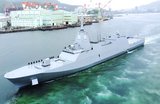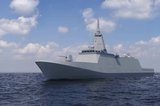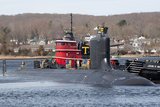Boeing advances F/A-18E, F-15E training simulation
Boeing is working on a three-year contract with the US Air Force Research Laboratory to adapt innovative training technologies for the F-15E Eagle and the F/A-18E Super Hornet aircraft. The company has produced two aircraft now equipped to participate in live, virtual and constructive training simulations that combine real and simulated fighters.
Boeing is developing the simulation capabilities under a $6.3 million contract for both the US Air Force (USAF) F-15E and the US Navy F/A-18E/F. Under the current contract, the pilot project will culminate with a capstone demonstration at Nellis Air Force Base in Nevada in late 2013.
According to Boeing, the technology enables the aircraft to train in an environment that puts them at odds against real aircraft and computer-generated enemy threats at the same time. It can provide aircrews with a complex virtual strike environment in which to train, while potentially decreasing the number of real aircraft and other assets to practice against. Generally, an actual combat aircraft (live) is networked with ground-based simulation computers (virtual) that provide computer-generated threats (constructive).
Before this new capability, pilots could practice using flight simulators on the ground, but when they trained in the actual aircraft, other people were needed to play the role of an opponent, commonly referred to as a ‘red’ or adversary team. Having a virtual combat simulation while actually flying is expected to reduce the number of real aircraft or other live assets needed to form a red team, providing cost-savings and a safer training environment.
Boeing began developing this modelling and simulation technology independently in 2007, and a series of demonstrations with an F-15E through November 2009 verified key components. A Super Hornet recently completed its first flight tests to evaluate these new technologies. During the most recent flight tests, two F/A-18Es and two F-15Es simulated air combat between two live F-16s and 12 virtual aircraft, as well as multiple ground threats. A 40/45 Airborne Early Warning and Control System (AWACS) surrogate provided command and control for the exercise.
John Schwering, Boeing business development leader for integrated Live, Virtual and Constructive training, said: ‘The integrated training environment can generate warfighter readiness and make aviation flight training much more effective. Training can be significantly enhanced by increasing the overall threat density with the use of more sophisticated constructive adversary aircraft and ground-based electronic warfare threats.’
More from Naval Warfare
-
![Future of the Canadian Patrol Submarine Project is still unclear]()
Future of the Canadian Patrol Submarine Project is still unclear
The Canadian government remains tight-lipped on the timeline and funding required for the next steps of its Canadian Submarine Patrol Project, which should offer improved capabilities for the country’s navy.
-
![Mitsubishi eyes future with Australia’s Mogami selection]()
Mitsubishi eyes future with Australia’s Mogami selection
With Australia’s selection of the Mogami-class for Project Sea 3000, Mitsubishi is investigating local production in the next decade as potential export opportunities emerge.
-
![Thales’ new Sonar 76Nano could equip UK Royal Navy on anti-submarine warfare missions]()
Thales’ new Sonar 76Nano could equip UK Royal Navy on anti-submarine warfare missions
The new sonar is designed to equip uncrewed underwater vessels, with the potential to be used by the Royal Navy for its Atlantic Bastion and Atlantic Net missions.
-
![UK to join US Navy’s Virginia-class submarine assembly effort to speed up construction]()
UK to join US Navy’s Virginia-class submarine assembly effort to speed up construction
The expansion of the Virginia-class submarine construction to UK shores could accelerate the project as US shipbuilders continue to fall short of delivery goals.























